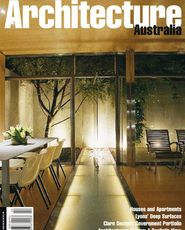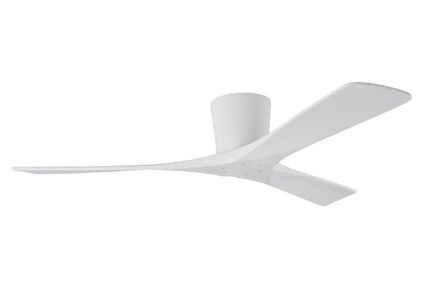This modest project in north-western NSW proposes a new type of low cost house, suitable for location and, when necessary, relocation almost anywhere. Screw-pile technology, united to a lightweight frame and double roof system, eliminates costly mass foundations. Tying the double roof to removeable screw piles makes a very strong building, with the earth itself providing structural restraint. Our house, which cost $125,000 or $590 per sq m, is a prototype for a mass production building system with endless design variations. It contains both innovations and still-unresolved details consistent with attempting a new architecture using only readily available components. In practical terms, it has been designed so that the owner has ready access to his parents, who live next door. The courtyard formed by the L plan is for a tube stock plant nursery, while the screened tack room and attached coolroom allows for the region’s well-known bush tucker to be dressed and stored. We found that screw piles are very effective if related to an adjustable ‘tartan’ of sub-floor standard ‘C’ section channels that can absorb their unavoidable positioning tolerance. Here, a simple weld junction was made between the pile and beam tartan. Though we wanted to manufacture an adjustable junction bracket, it was too expensive for this project. |
|||||||||||
The double roof idea came from the old meat room at Angledool Station, where the gap is no more than 300mm and which perfectly creates a gentle air movement between the two roof planes. By increasing this to 600mm, necessary repair access is provided, while airflow is still very comfortable. This type of gentle, cooling air current was beautifully defined for me by Evelyn Crawford, the author and Bakanji elder, as “Any stronger and it will be hot; very hot!” Double-sheeted floors of Cypress with 9mm ply fixed to joist soffits, containing a simple, draped, double-sided, reflective membrane, was adapted by the Timber Development Authority’s Andrew Kirk from University of Adelaide research into the amazing insulation obtained by sealing this cheap material into stud frames. All external walls, the under-roof and the floors use this method, and the resulting thermal insulation, given the sealed membrane’s double-sided reflectivity, is good in all seasons. Cypress Pine from the Pilliga Scrub plantation clads the floor and external walls. Gun fixing with a new type of fine nail allows the rehabilitation of this beautiful but formerly difficult to fix timber. Internal walls and ceilings are lined with ‘cheap-as-chips’ 9mm C/D grade waterproof Radiata ply which provides good bracing, is virtually indestructible and, combined with the Cypress flooring, gives an elegant ‘honey-glow’ interior.
Ridge ventilation was most ingeniously resolved by the contractor, who, after studying our laboured attempts at a cheap venting ridge, proposed using just standard ridge capping, which, he explained, provides an excellent weatherproof air flow if not dressed into the corrugations. Economic timber sash and screens were made using a 23 cent galvanised joining bracket, not dissimilar to those used by Lukas von Hilderbrandt (1668-1745) for the stable windows at his Palais Schönborn (and still OK nearly 300 years later). However, it is the venting between the two roofs that makes the most welcoming architectural innovation. Stepping outside onto a high and well ventilated verandah is a very different experience: one’s sight line is increased and there is a sense of easy use aided by the benign air flow. This differs from the traditonal Australian verandah, bedevilled in summer by hot air trapped under low corrugated iron sheeting. Consequently, our new verandah section enables nearly half of the plan area of this house to be exterior, which should be a civic benefit, wherever this knockabout wanderer may temporarily reside.
Images: Peter Myers, digital production John Gollings
Credits
- Project
- Knockabout Walkabout
- Architect
-
Peter Myers
- Project Team
- Peter Myers, Glenn Elmbaek (student from the Arkitektskolen, Århus, Denmark), Michael Green (student from the Arkitektskolen, Århus, Denmark)
- Consultants
-
Builder
Herr Baumeister H.H. Lukas
Constructing authority Local Aboriginal Land Council
Engineer Arup
Project director ATSIC – Andrew McNally
- Site Details
- Project Details
-
Status
Built
Category Residential





















